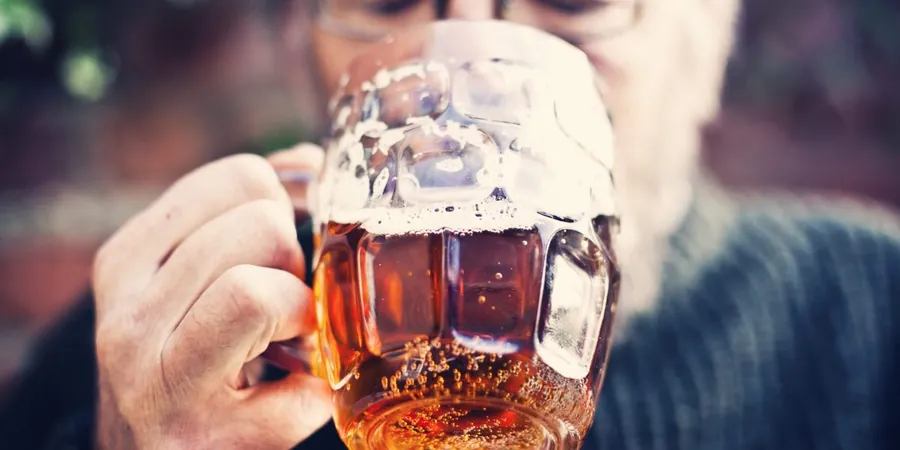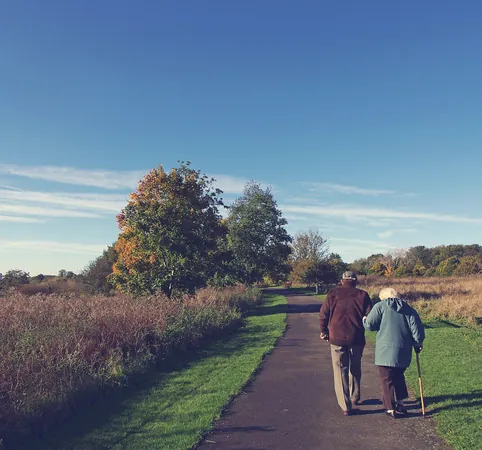
Binge Drinking Among Older Adults: A Growing Concern with Grave Consequences
2024-11-03
Author: Wei
Binge Drinking and Its Rising Trend Among Older Adults
Binge drinking, often thought of as a young adult phenomenon, is alarmingly on the rise among older adults. Defined as consuming four or more drinks within two hours at least five times per month for women (five for men), statistics reveal that 20% of adults aged 60 to 64 reported binge drinking in the past month. Even more concerning, 12% of those over 65 are partaking in binge drinking—a trend that has notably increased over the last decade, while younger adults aged 18 to 25 are actually drinking less.
Societal Attitudes and Drinking Patterns
So, what’s driving this unsettling trend? Experts suggest that evolving societal attitudes toward alcohol may play a role.
George F. Koob, PhD, director of the National Institute on Alcohol Abuse and Alcoholism, indicates that older adults tend to consume alcohol more frequently than their younger counterparts, with a notable proportion of those over 65 drinking on 20 or more days each month. In contrast, younger adults are shifting towards sobriety; a Gallup survey highlights that 65% of individuals aged 18 to 34 believe alcohol negatively impacts health, compared to just 39% of those aged 55 and older.
The Implications of a Demographic Shift
The demographic shift is significant. The number of older adults is expected to double within the next 40 years, and even if the binge drinking rates remain consistent, the absolute number of older binge drinkers will surge, potentially overwhelming the healthcare system.
Health Risks Associated with Binge Drinking
The dangers posed by binge drinking for this age group cannot be overstated. As we age, our bodies become less efficient at processing alcohol. Older adults tend to experience its effects more rapidly because the body’s ability to retain water diminishes with age. Consequently, they may be more susceptible to alcohol-related harms. Koob points out that older drinkers show more significant impairments than younger drinkers in various areas, including driving performance, reaction time, memory, and balance.
Falls pose a particularly significant risk for older adults, as they already face challenges with balance even without alcohol consumption. Alarmingly, studies suggest that falls occurring while intoxicated often result in more severe injuries. The CDC estimates that about 40% of falls among older adults involve alcohol, frequently with blood alcohol concentrations reaching 0.10%.
Interactions with Medications and Long-term Risks
Additionally, the interplay between alcohol and medications that many older adults take—such as sleep medications and other prescriptions—can lead to dangerous situations. Long-term binge drinking further amplifies the risk of developing alcohol use disorders, certain cancers, heart disease, and mental health issues.
Challenges in Identifying Binge Drinking
Identifying binge drinking in older adults can be challenging. Koob notes that many older individuals may be retired and socializing less, making their drinking habits less apparent and impactful on daily life. To assist in recognizing problematic drinking behaviors, the Short Michigan Alcoholism Screening Test–Geriatric Version (SMAST-G) offers useful questions:
- Do you ever underestimate how much you drink when talking to others?
- After a few drinks, do you skip meals because you don’t feel hungry?
- Does having a drink help alleviate shakiness or tremors?
- Does alcohol sometimes impair your memory?
- Have any healthcare professionals expressed concern about your drinking?
- Have you established rules for managing your alcohol consumption?
- Does drinking help you cope with feelings of loneliness?
The Way Forward: Addressing the Challenge of Binge Drinking Among Older Adults
As binge drinking rates rise among older adults, it is crucial to address this issue head-on. Increased awareness, access to preventative measures, and supportive interventions could help mitigate the risks and improve the quality of life for older adults across the nation. Ignoring this trend could lead to a health crisis that affects both individuals and the society they inhabit. Remember, awareness is the first step to change!


 Brasil (PT)
Brasil (PT)
 Canada (EN)
Canada (EN)
 Chile (ES)
Chile (ES)
 España (ES)
España (ES)
 France (FR)
France (FR)
 Hong Kong (EN)
Hong Kong (EN)
 Italia (IT)
Italia (IT)
 日本 (JA)
日本 (JA)
 Magyarország (HU)
Magyarország (HU)
 Norge (NO)
Norge (NO)
 Polska (PL)
Polska (PL)
 Schweiz (DE)
Schweiz (DE)
 Singapore (EN)
Singapore (EN)
 Sverige (SV)
Sverige (SV)
 Suomi (FI)
Suomi (FI)
 Türkiye (TR)
Türkiye (TR)